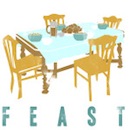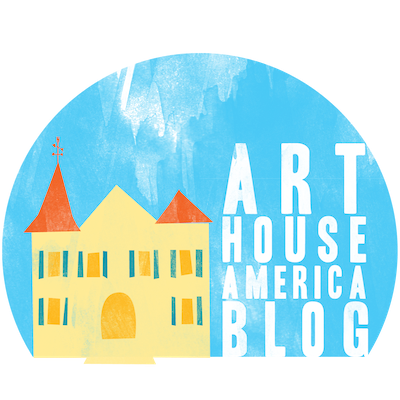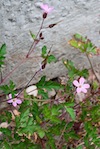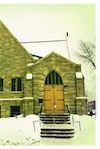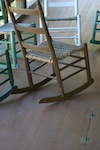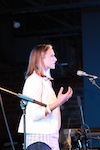Three summers ago, Chuck and I were visiting family in our hometown of Yuba City, California. Whenever we’re there, we spend a lot of time on our bikes. The terrain is flat and bike lanes are everywhere, very unlike our Nashville suburb with its hills and narrow two-lane roads. On this particular visit, we set off to tour the important landmarks of our youth — Chuck’s grammar school, his old neighborhood, the high school parking lot where we’d met in marching band rehearsals our freshman year, and finally, to the site of my grandparents' house, where they’d lived until the time of their death in the last half of the 70s.
 We had to be honest or risk sitting in awkward silence over tea or the next meal, or, God forbid, be reduced to mere small talk while cleaning bathrooms together. Because of these interpersonal hurdles that could only be cleared with grace and mercy, I felt a quiet confidence growing in me, and my ability to listen and tend to the needs of others broke away from my need to have control or be independent. This, we found in the end, is the real bread and butter of communal life — forced honesty and a corporate desire to do more than merely share space and chores kept gossip at bay and challenged us to speak truth in love.
We had to be honest or risk sitting in awkward silence over tea or the next meal, or, God forbid, be reduced to mere small talk while cleaning bathrooms together. Because of these interpersonal hurdles that could only be cleared with grace and mercy, I felt a quiet confidence growing in me, and my ability to listen and tend to the needs of others broke away from my need to have control or be independent. This, we found in the end, is the real bread and butter of communal life — forced honesty and a corporate desire to do more than merely share space and chores kept gossip at bay and challenged us to speak truth in love. We had to be honest or risk sitting in awkward silence over tea or the next meal, or, God forbid, be reduced to mere small talk while cleaning bathrooms together. Because of these interpersonal hurdles that could only be cleared with grace and mercy, I felt a quiet confidence growing in me, and my ability to listen and tend to the needs of others broke away from my need to have control or be independent. This, we found in the end, is the real bread and butter of communal life — forced honesty and a corporate desire to do more than merely share space and chores kept gossip at bay and challenged us to speak truth in love.
We had to be honest or risk sitting in awkward silence over tea or the next meal, or, God forbid, be reduced to mere small talk while cleaning bathrooms together. Because of these interpersonal hurdles that could only be cleared with grace and mercy, I felt a quiet confidence growing in me, and my ability to listen and tend to the needs of others broke away from my need to have control or be independent. This, we found in the end, is the real bread and butter of communal life — forced honesty and a corporate desire to do more than merely share space and chores kept gossip at bay and challenged us to speak truth in love.



